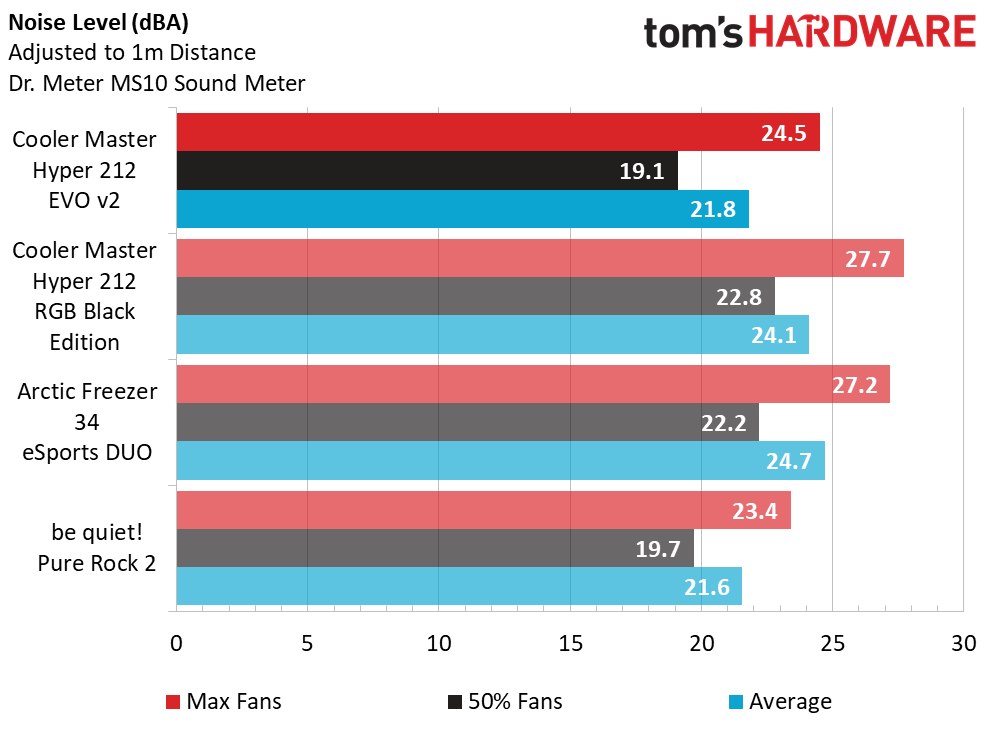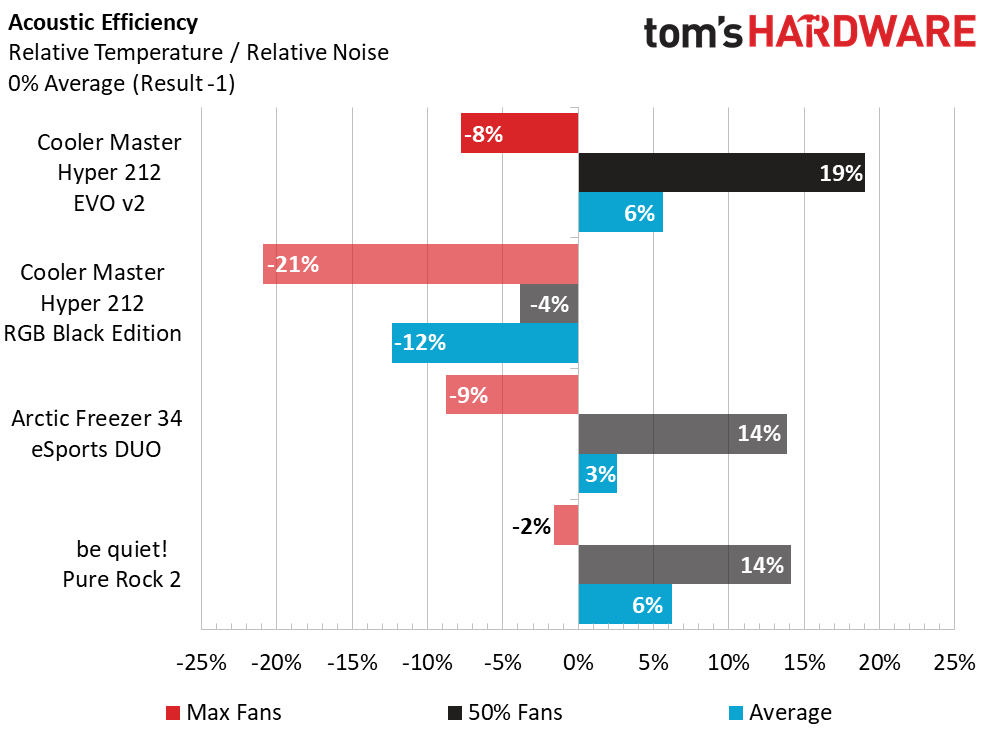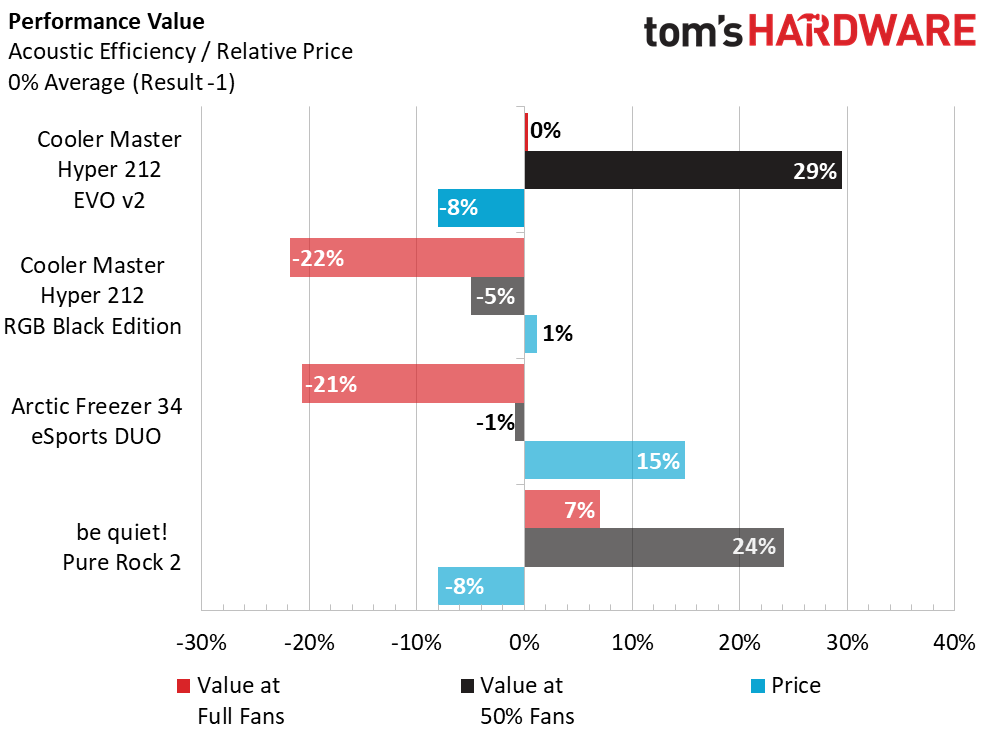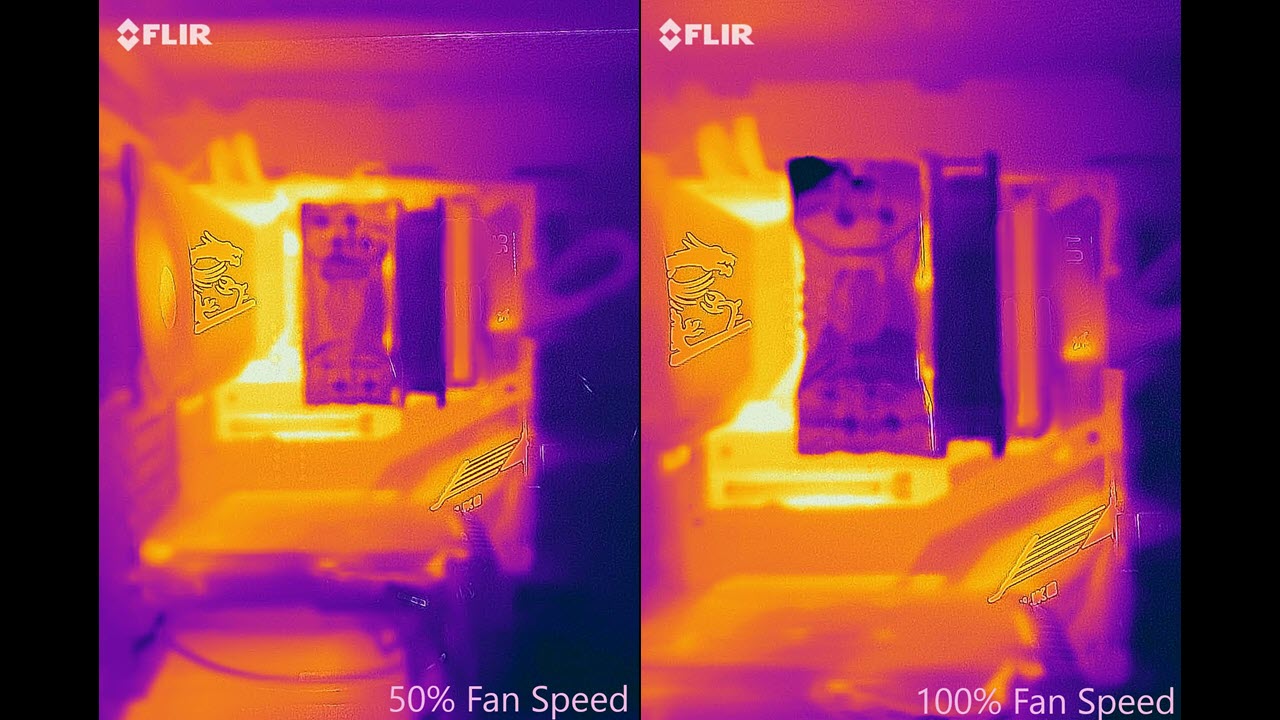Why you can trust Tom's Hardware
Test System
For our CPU cooling tests, we use the same hardware, overclock and configuration for each and every test to minimize environment variables in testing. This allows for all results across all coolers tested on the platform to be viable as side-by-side examination for direct compare/contrast.
| CPU | Intel Core i9-10850K LGA1200 (Comet Lake), all 10 cores 4.6Ghz @ 1.190v, (3.60Ghz stock speed, single core boost @ 5.2Ghz) |
| Motherboard | MSI Z490 MEG Godlike (bios vers. 7C70v12) |
| RAM | Corsair Dominator Platinum RGB, 16GB (2x8GB) DDR4-3600 |
| SSD | Corsair MP600 NVMe 500GB, 500GB |
| GPU | Gigabyte GTX 1050 Ti |
| PSU | be quiet! Dark Power Pro11 1200W |
| Case | Corsair Graphite 760T |
| Monitoring | CrystalFontz CFA-633-TMI-KU, 4x Dallas One Wire WR-DOW-Y17 sensors |
| Fan Control | Corsair Commander Pro, 100%/50% PWM Speed profiles (liquid cooling pump always @100%, if applicable) |
| OS | Windows 10 Pro 64-bit |
| Networking | Disconnected, not used |
| Thermal Compound | Arctic MX-4 |
Data comparisons are based on data collected from testing performed on our new Intel i9-10850K system, including re-visiting many previously covered products which were originally covered on the prior testing platform which pivoted around an i7-5930k (4.20ghz @1.20v).
Prime95 v29.4b8 (no AVX) is used for two-hour intervals, one managing fans at 50% PWM and the other at 100% PWM with RPM measurements being taken every three seconds and averaged across the duration of each two-hour capture. Omitting AVX instruction sets allows for accurate, 100% loads at chosen clock speeds, while allowing AVX instructions would provide higher, albeit, unrealistic synthetic CPU loads and excessive heat production, less indicative of real-world use.
This also allows for a greater range CPU coolers to be tested and compared without the need to configure the system differently for smaller coolers which may not handle the excessive thermal loads being generated during testing, while larger coolers might be better equipped to manage heat output produced by the i9-10850K.
While the test platform is quite capable of a 10-core overclock at 5.0Ghz, we were seeing that 360mm AIOs struggle to keep core temperatures in check at lower fan speeds, providing insight that the enthusiast-grade i9’s need excellent cooling if the goal is overclocking.
HWInfo64 is used for real-time core temperature readout, thermal throttling alerts, motherboard power consumption, CPU speed and logging of data, while a CrystalFontz CFA-633-TMI-KU is used to monitor and later average both ambient room (two probes) and motherboard voltage regulator heatsink (two probes).
Comparison Coolers
We evaluated the Cooler Master Hyper 212 EVO v2 against a few notable peers in the small air cooling group such as the Hyper 212’s sibling, the Hyper 212 RGB Black Edition, the Arctic Freezer 34 eSports Duo and the be quiet! Pure Rock 2. Each of these coolers represent a similar cooler footprint and similar price point.
Get Tom's Hardware's best news and in-depth reviews, straight to your inbox.
Benchmarks

While all units of our testing group perform well at 100% fan speeds, each of the single-fan coolers in our chart above didn’t prevent thermal throttling of the CPU during the 50% fan speed tests. The only cooler without any throttling was the dual 120mm fan Arctic Freezer 34 eSports Duo.

The 1800 RPM SickleFlow 120 fan used on the Hyper 212 EVO v2 registered a bit above its max rating, although within the +/-10% deviation. While not the fastest spinning fan of the testing group, also not the slowest.

The faster fans on the Cooler Master Hyper 212 RGB Black and the Arctic Freezer 34 eSports DUO show a slight increase over the quieter Hyper 212 EVO v2 and the be quiet! Pure Rock 2, but at these decibel levels, the difference is a quiet whisper vs. a faint whisper.

Our acoustic efficiency chart can be misleading on the 50% values for both Hyper 212’s and the Pure Rock 2, because our CPU did throttle during these periods, so while these seem promising, our i9-10850K was running at decreased clock rate over one or more cores for some periods of the testing period.
Conclusion

The new Cooler Master Hyper 212 Evo v2 hits at $40, which is slightly lower than the testing group average and $10 less than the current price of the Arctic Freezer 34 eSports Duo. Budget cooling does involve cutting some costs, which means using a single fan (rather than two) like the Arctic 34 eSports Duo which does perform noticeably better with thermal loads and didn’t encounter CPU thermal throttling.

Our Flir One Pro thermal imaging camera shows some noticeable differences in heat soak throughout the cooling tower itself between 50% and 100%, which is to be expected. There is also a slightly lower thermal signature in the adjacent regions at full speed, which indicates the added benefit of improved airflow.
Considering the low noise levels of the Hyper 212 Evo v2 even at full speed, having a quality fan curve which favors higher fan RPM is beneficial for any system installation. We’d advise double checking the appropriate motherboard CPU_FAN header (or other chosen header) to make sure the cooler has the ability to cool effectively at appropriately reported CPU temperatures.
With the new Hyper 212 Evo v2 now available, those with fond memories of their previous Hyper 212’s now have the chance to install a piece of updated nostalgia into a modern, silent HTPC system or home server, or perhaps as a piece recommended by a mentor for a novice system builder’s first PC.
- 1
- 2
Current page: Comparison Coolers, Testing Results and Conclusion
Prev Page Features and Specifications
Garrett Carver is a contributor for Tom’s Hardware, primarily covering thermal compound comparisons and CPU cooling reviews; both air and liquid, including multiple variations of each.
-
tennis2 Pretty big stretch to call this an Evo V2 when it doesn't have the flatted full coverage heatpipes of the original Evo.Reply -
Johnpombrio I have the Hyper 212 EVO black edition which has a very similar mounting system. It works fine as long as I don't go crazy overclocking the CPU. With a i9-9900K and a 4.6GHz OC, I can run the fan at low speeds and have the temp max out at around 70C. Nice and quiet and good enough for me! The black looks nice had the RGB fan hooked to my ASUS mobo rolls slowly through the colors.Reply -
Johnpombrio Reply
Hmm, there are several ways the Hyper 212 have had the heat pipes attached to the bottom plate over the years. The original one had round heatpipes at the base with gaps, then they went to flattened and polished with gaps, then they went to flattened, polished and right next to one another, then for the black and the V2 version, they have flattened and polished with a bit of a gap between the heatpipes and the base. With the base now acting as it OWN radiator with fins, this last setup would be MORE effecient to remove heat. Both the V2 and the RGB black editions are my current recommendations, but all of the hyper 212s have been great coolers.tennis2 said:Pretty big stretch to call this an Evo V2 when it doesn't have the flatted full coverage heatpipes of the original Evo. -
AtotehZ Reply
A Noctua NH-D15 on a 9900k maxes out in the 70's degrees with no OC.Johnpombrio said:I have the Hyper 212 EVO black edition which has a very similar mounting system. It works fine as long as I don't go crazy overclocking the CPU. With a i9-9900K and a 4.6GHz OC, I can run the fan at low speeds and have the temp max out at around 70C. Nice and quiet and good enough for me! The black looks nice had the RGB fan hooked to my ASUS mobo rolls slowly through the colors.
You'll be throttling in any stress test with a Hyper 212 EVO on a 9900k. Even if you're running max fan speed.
It boils down to this. You need to dissipate around 200W of heat if you're running at 4.6 Ghz and your cooler has a TDP of 150W. You'll never get full performance out of a 9900k with your Hyper 212 EVO.
Oh and also.. while waiting for my NH-D15 to arrive I was running the Hyper 212 EVO from my old computer on my new 9900k. It took less than 30 secs sustained load for it to throttle at stock settings. That means you're throttling during most compiling, encoding, decompression and some gaming scenarios. -
Johnpombrio AtotehZ, What? You must have some miserable i9-9900K if you cannot get 4.6GHz at 70C with full CPU load. He is mine. I have the CPU fan on my Hyper 212 RGB Black set to 30% ALL THE TIME so it is always quiet. Here are my results (only visible on the forum page). Seriously something wrong with your results. Redo your thermal paste and make sure the cooler is firmly set on the heat spreader. My results are typical for pretty much all users of the i9-9900K on air. PS running longer does NOT heat soak the cooler and it is extremely stable with these being very typical temps over hours of running.Reply
-
eklipz330 overpriced at $40, i'd say it needs to be <$25 to be a decent value. $10 more can get you a scythe mugen($50) which is an extremely highly regarded air cooler, and you can barely get better than that in general.Reply -
Phaaze88 Reply
It's somewhat amusing to see people post AIDA 64 results only to find out that they checked off all, or almost all, those boxes.Johnpombrio said:AtotehZ, What? You must have some miserable i9-9900K if you cannot get 4.6GHz at 70C with full CPU load. He is mine. I have the CPU fan on my Hyper 212 RGB Black set to 30% ALL THE TIME so it is always quiet. Here are my results (only visible on the forum page). Seriously something wrong with your results. Redo your thermal paste and make sure the cooler is firmly set on the heat spreader. My results are typical for pretty much all users of the i9-9900K on air. PS running longer does NOT heat soak the cooler and it is extremely stable with these being very typical temps over hours of running.
FPU only is actually the heaviest cpu load from that app. -
Johnpombrio OK Phazz, here is the result using Prime. the temps are actually lower. What test do you WANT me to run?Reply
-
AtotehZ Reply
What's more likely is that the temps in your system aren't being reported correctly and you're shortening the lifespan of your hardware.Johnpombrio said:OK Phazz, here is the result using Prime. the temps are actually lower. What test do you WANT me to run?
It is an undeniable fact that a Hyper 212 EVO black edition is a 150W TDP cooler and the 9900k draws 200W+ at stock. You really should check that out.
EDIT: Oh and if you really wanna know which test to run. Prime95 "Small FFT's" is the one to use to push the CPU. If you use "Blend" you should run it till it's gone through all the tests to make sure. Exactly how long that takes I don't remember, but it's more than 30 mins.
I do remember however that "Blend" starts with Large FFT's, which... read the description.
You should also get a program that watches the power draw. It should be 200W+. It might even be 225W. Personally I use Core Temp for that.